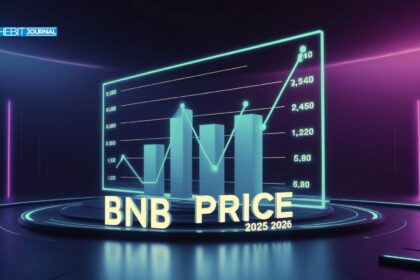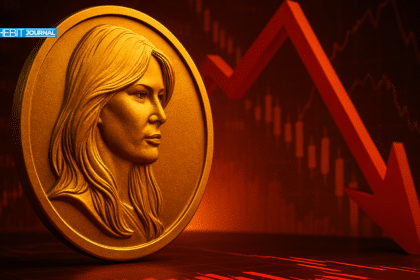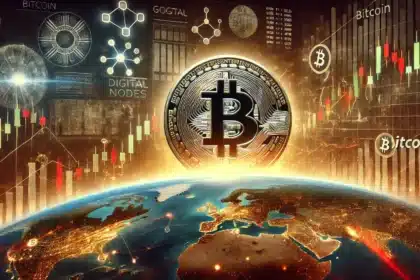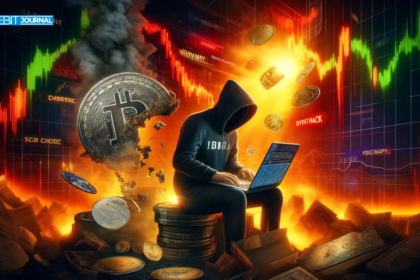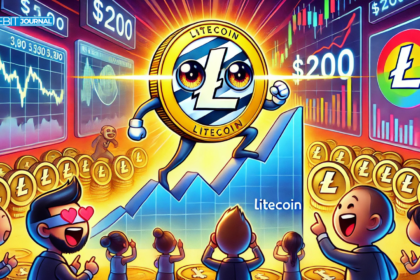Bitcoin price surged to $105,505 on Monday morning as optimism returned to global markets following China’s confirmation of a 90-day tariff suspension agreement with the United States. This latest rally marks the highest Bitcoin price since its last all-time high of $109,356, adding fresh momentum after several weeks of consolidation.
Between 07:00 and 08:00 UTC, a powerful one-hour green candle sent Bitcoin price soaring from around $103,200 to just under $106,000. That was a 1.7% increase which puts the leading cryptocurrency within 4% of price discovery levels. As of press time, Bitcoin price has retraced slightly to $104,483.
Macro Conditions Fuel Risk-On Rally
China’s announcement of the tariff suspension came after what were described as “robust” negotiations, according to a report by the BBC. Scott Bessent confirmed that the US and China have agreed to a 90-day pause on reciprocal tariffs, with both nations reducing duties by 115%.
“After “robust” discussions, the US and China have agreed a 90-day pause on “reciprocal” tariffs, meaning both sides will reduce their tariffs by 115%.”
This macro development created a risk-on wave across global markets. Gold, a traditional safe haven, dropped 1.4% to $3,278 per ounce, while WTI crude futures climbed 1.5% to extend their multi-day rally. Bitcoin price tracked higher in tandem with oil and equities, reflecting reduced demand for defensive hedges.
During such macro rotations, Bitcoin price movements tend to decouple from gold, suggesting a shift in how investors classify digital assets. Increasingly, traders view Bitcoin as a beta macro asset rather than a purely defensive store of value.

Institutional Inflows Drive Upward Momentum
Spot Bitcoin exchange-traded funds (ETFs) remain a crucial driver of the current Bitcoin price rally. According to Farside Investors, total inflows across US-listed bitcoin ETFs have surpassed $41 billion. On Friday alone, these products attracted $321 million in net inflows.
Bitcoin ETFs are now absorbing BTC at a rate six times higher than the current mining issuance. This structural imbalance between supply and demand continues to put upward pressure on the Bitcoin price, especially during low-liquidity trading sessions.
As institutional capital enters through regulated products, BTC price benefits from enhanced credibility and reduced friction for traditional investors. These flows have been instrumental in the asset’s climb back above $100,000 and toward fresh all-time highs.
Market Structure Supports the Bitcoin Price
Technical indicators around the $106,000 zone are proving important for price discovery. Bid liquidity is currently stacked slightly below that level, while limit sell orders begin to accumulate overhead. The $105,000 mark itself holds psychological significance as a midpoint between resistance at $106,400 and support near $102,400.
The broader backdrop also favours further gains in the Bitcoin price. The BBC confirmed that China has formally suspended counter-tariff measures, which has helped calm concerns around global trade and demand. Meanwhile, the US dollar remains flat, and bond yields are near recent lows, reinforcing risk appetite across markets.
Bitcoin’s reclassification from speculative asset to macro-sensitive instrument allows it to benefit more directly from positive geopolitical developments. The renewed buying interest reflects this evolving dynamic.

Outlook: All Eyes on Inflation and the Fed
With BTC price once again pressing against the top of its 2025 range, traders are eyeing several key macro catalysts. Tuesday’s US Consumer Price Index (CPI) report is expected to shed light on inflation trends, while comments from the Federal Reserve may provide further direction for markets.
If inflation prints come in softer than expected, it could support dovish policy expectations, encouraging continued flows into risk assets like Bitcoin. Such a scenario would strengthen the bullish case for the Bitcoin price to retest and potentially surpass the January high.
Conversely, if macro indicators disappoint, short-term pullbacks could occur. However, structural support from ETF inflows and geopolitical tailwinds may limit downside volatility. Analysts remain optimistic about Bitcoin price outlook as long as demand continues to outstrip supply.
Conclusion: Bitcoin Price at the Center of Global Sentiment
BTC price remains a clear barometer of investor risk appetite in 2025. Monday’s price action not only pushed BTC near its all-time high, but also validated its role as a globally recognized asset class.
With institutional flows rising, trade tensions easing, and macro policy stabilizing, Bitcoin price is once again leading broader financial markets. Whether it can achieve price discovery above $109,356 will depend on the interplay between economic data and investor conviction.
For now, Bitcoin price continues to reflect the world’s evolving relationship with digital assets, and its potential as a next-generation reserve instrument.
FAQs
What caused the recent Bitcoin price surge to $105K?
China’s confirmation of a US tariff suspension and continued ETF inflows drove the price upward.
How close is Bitcoin to a new all-time high?
The current Bitcoin price is within 4% of its all-time high of $109,356.
Are ETFs influencing the Bitcoin price?
Yes. ETFs are absorbing BTC at rates significantly above mining output, driving the price higher.
What macro factors support the bitcoin price?
Trade optimism, soft inflation expectations, and stable interest rates all favour Bitcoin.
What’s next for the Bitcoin price?
Traders are watching Tuesday’s CPI data and Fed comments for further direction.
Glossary
Bitcoin price: The current market value of one Bitcoin, influenced by global trading, supply/demand dynamics, and macroeconomic factors.
Tariff Suspension: A temporary agreement to halt or reduce import/export duties between two nations.
ETF (Exchange-Traded Fund): A type of investment fund that trades on exchanges and gives exposure to underlying assets, such as Bitcoin.
Risk-on Sentiment: A market condition where investors move capital into higher-risk assets.
Price Discovery: The process by which markets determine the price of an asset based on supply and demand.



















